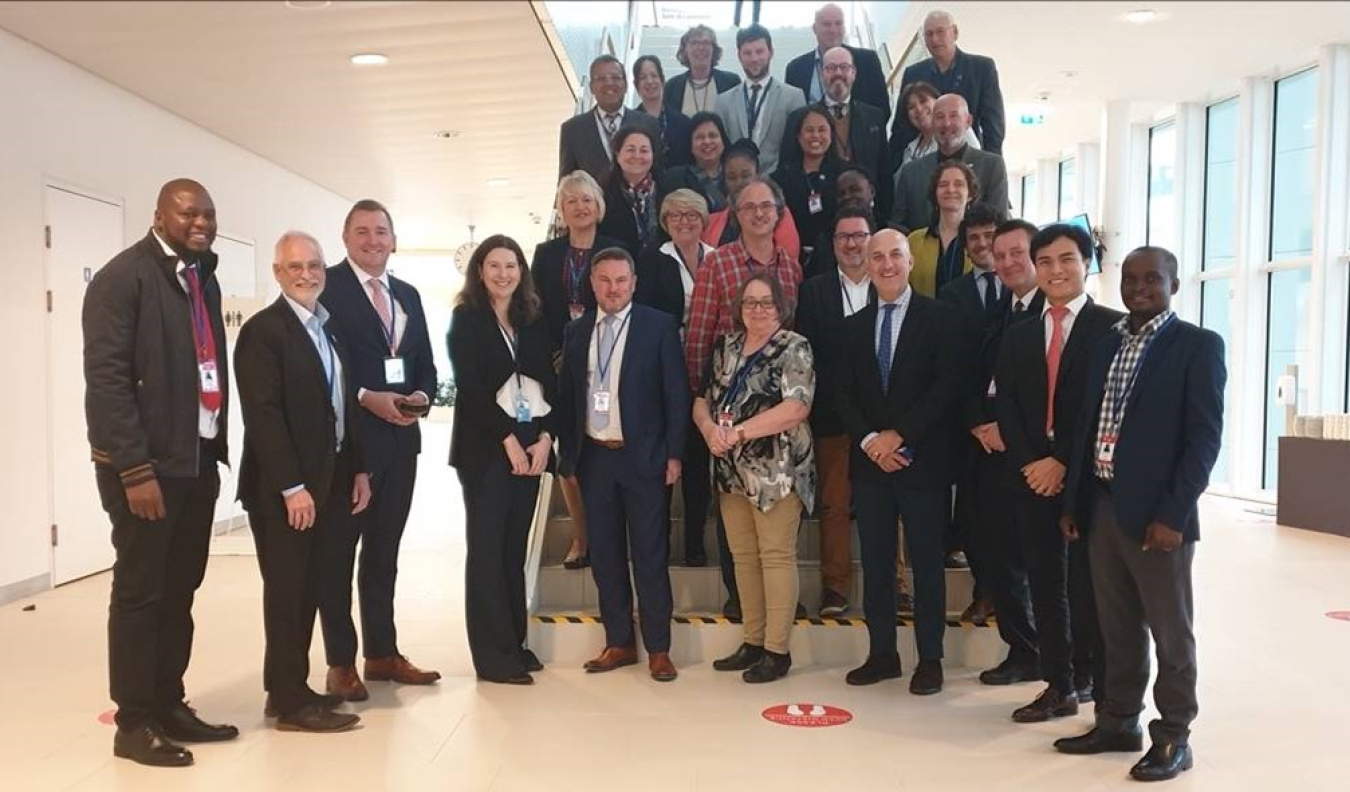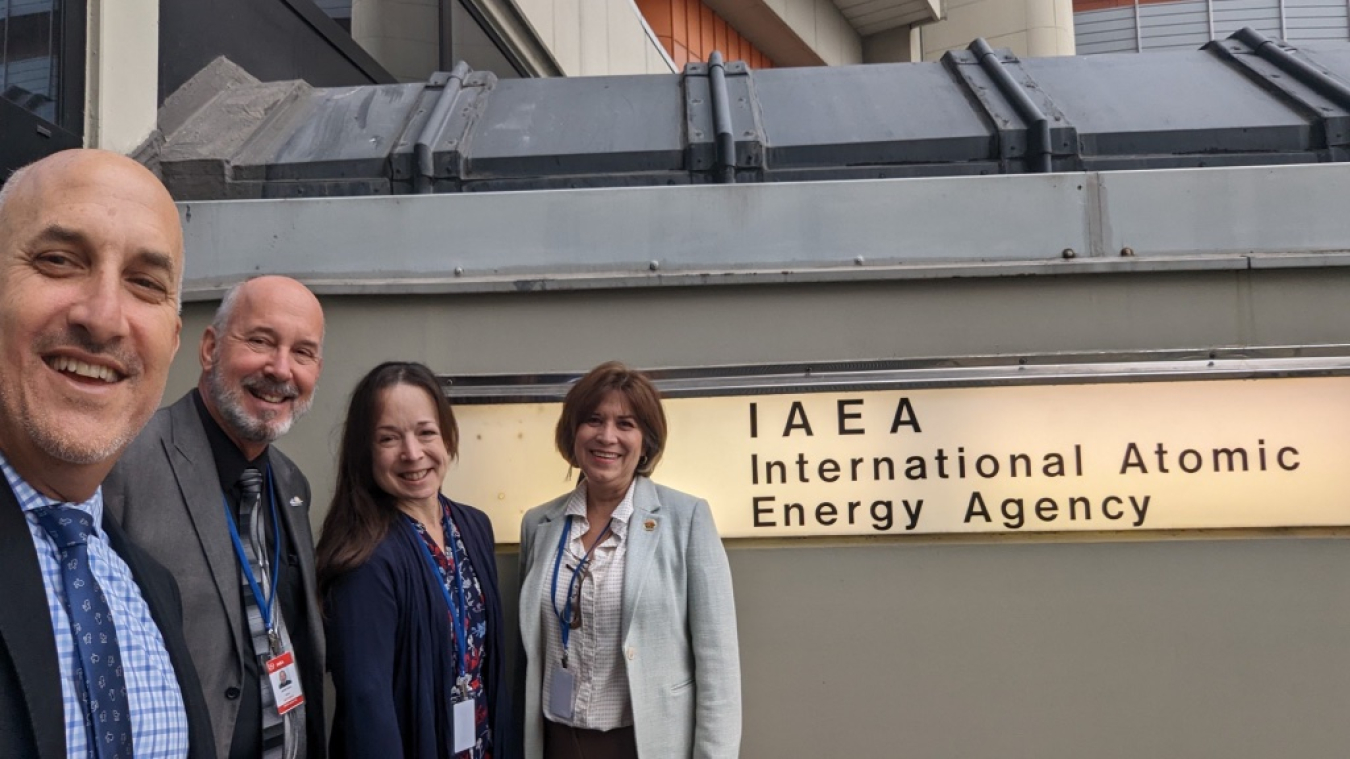Mayors & other government officials from the US were among the 70 attendees from over 25 countries who gathered in Vienna recently for the 5 day Technical Meeting for Municipalities with Nuclear Facilities hosted by the International Atomic Energy Agency.
Office of Environmental Management
November 15, 2022
VIENNA – Mayors and other government officials from the U.S. were among the 70 attendees from over 25 countries who gathered in Vienna recently for the five-day Technical Meeting for Municipalities with Nuclear Facilities hosted by the International Atomic Energy Agency (IAEA).
The event provided an opportunity for information exchange among communities from around the world hosting or potentially hosting nuclear power plants and radioactive waste management facilities, including nuclear site owners, operators and regulators.
“The meeting enabled real-time two-way dialogue and sharing lessons learned and best practices throughout the lifecycle of nuclear facilities,” said Kristen Ellis, EM’s director of regulatory, intergovernmental, and stakeholder engagement, who attended the meeting and coordinated its sessions and working groups.
Working in parallel with attendees, the Group of European Municipalities with Nuclear Facilities in Europe (GMF Europe), Energy Communities Alliance (ECA), Canadian Association of Nuclear Host Communities (CANHC) and other international organizations noted the potential for collaboration with similar municipal organizations across the globe. As a result of the meeting, GMF Europe, ECA and CANHC will continue their individual and joint advocacy for support for local host communities among regulators, current and future nuclear industry and other members of the nuclear supply chain.
“These group discussions show the critical role for host communities living with nuclear facilities, and the challenges and opportunities for producing carbon-free, baseload energy and addressing the nuclear fuel cycle.” said Brent Gerry, ECA chair and mayor of West Richland, Washington, which is located near the Hanford Site.
Adrian Foster, mayor of Clarington in Ontario and chair of CANHC, said, “Amongst the outcomes from the shared dialogue was recognition that the current and future nuclear industry is fully dependent on the support of willing local host communities. As such, there is an expectation that the nuclear operators and nuclear supply chain provide meaningful support to the local host communities.”

Participants in the recent Technical Meeting for Municipalities with Nuclear Facilities gather outside the International Atomic Energy Agency headquarters in Vienna. From left are Seth Kirshenberg, executive director of Energy Communities Alliance (ECA); Brent Gerry, mayor of West Richland, Washington, and ECA chair; Kristen Ellis, EM director of regulatory, intergovernmental, and stakeholder engagement; and Rebecca Casper, mayor of Idaho Falls, Idaho and ECA vice chair.
Pia Almström, GMF Europe president and mayor of Kävlinge, Sweden, said, “An open and transparent approach toward municipalities is key to engaging them in long-term dialogue. GMF, ECA and CANHC are grateful to the IAEA and its leadership for creating a forum to bring together municipalities and share experience on topics of interest to current and proposed host nuclear communities.”
U.S. representation at the meeting included Ellis; Angelica Gheen with the DOE Office of Integrated Waste Management; Seth Kirshenberg, Rebecca Casper and Brent Gerry with ECA; and Christopher Markley with the U.S. Nuclear Regulatory Commission.
Also at the meeting, Ellis gave a presentation providing an overview of EM. She discussed how EM works with national intergovernmental organizations through cooperative agreements, and has government-to-government relationships with tribes to ensure involvement in cleanup decisions while protecting relevant tribal rights and resources. She also gave an overview of the EM Site-Specific Advisory Board and EM Advisory Board.
The meeting ended with a group photo before attendees prepared to travel home to their respective countries. However, the dialogue will not end in Vienna. Participants are excited to continue exploring a new cooperative framework with local municipalities and communities.
“Once you get the ball rolling on these types of conversations, they don’t stop,” Ellis said. “On the contrary, they lead to forming new relationships and ongoing communication that transfers back to their communities and creates more effective public involvement.”
To receive the latest news and updates about the Office of Environmental Management, submit your e-mail address.

